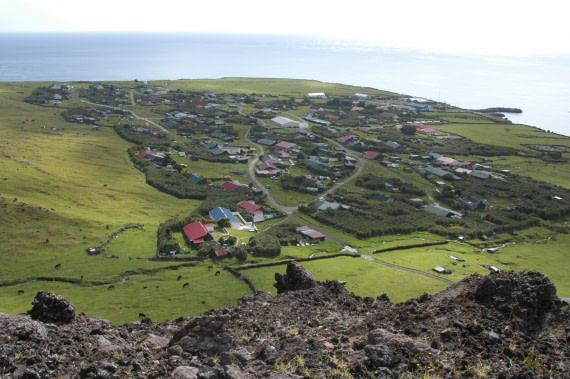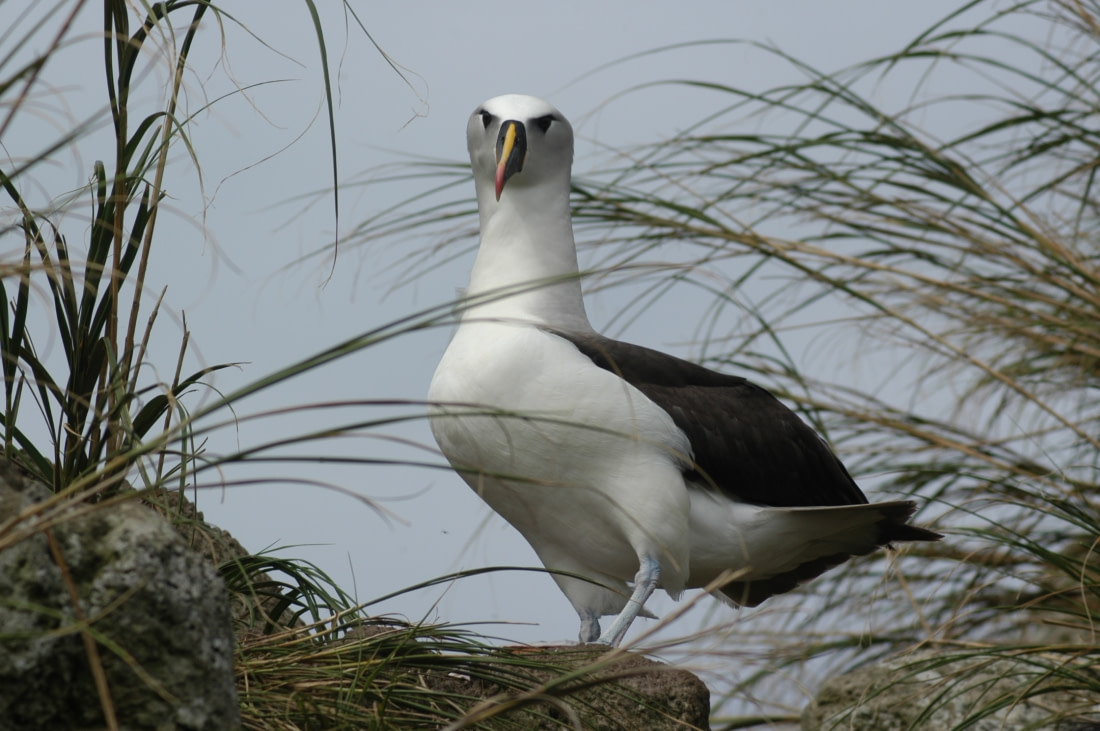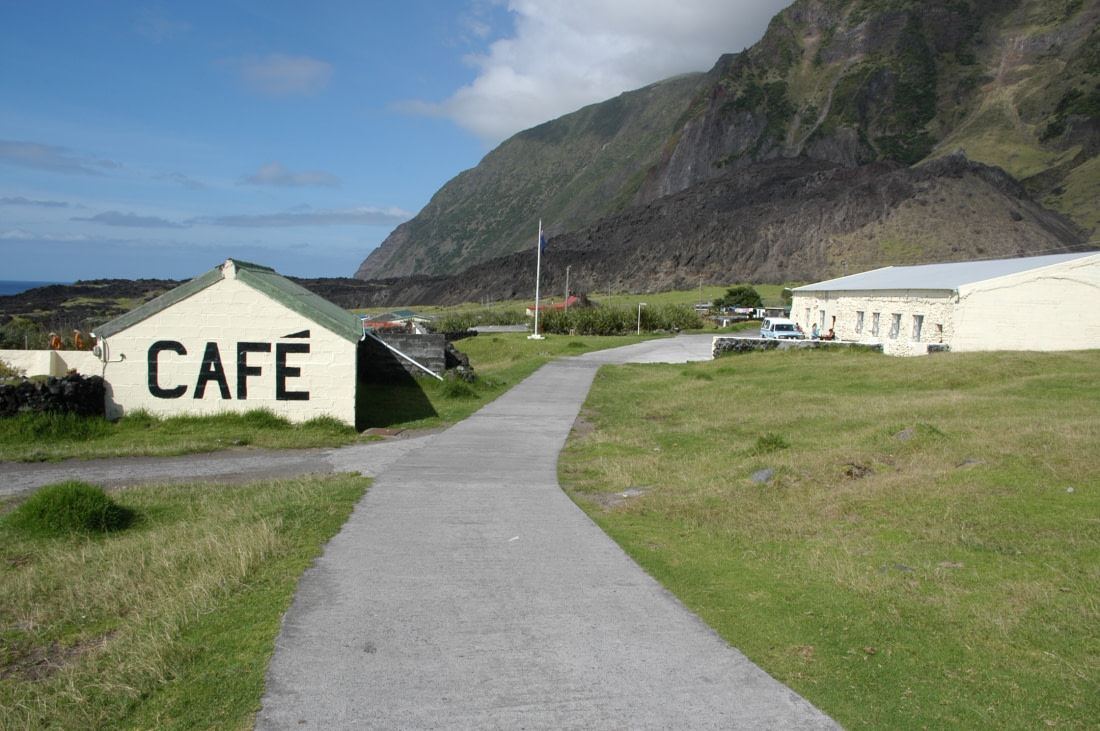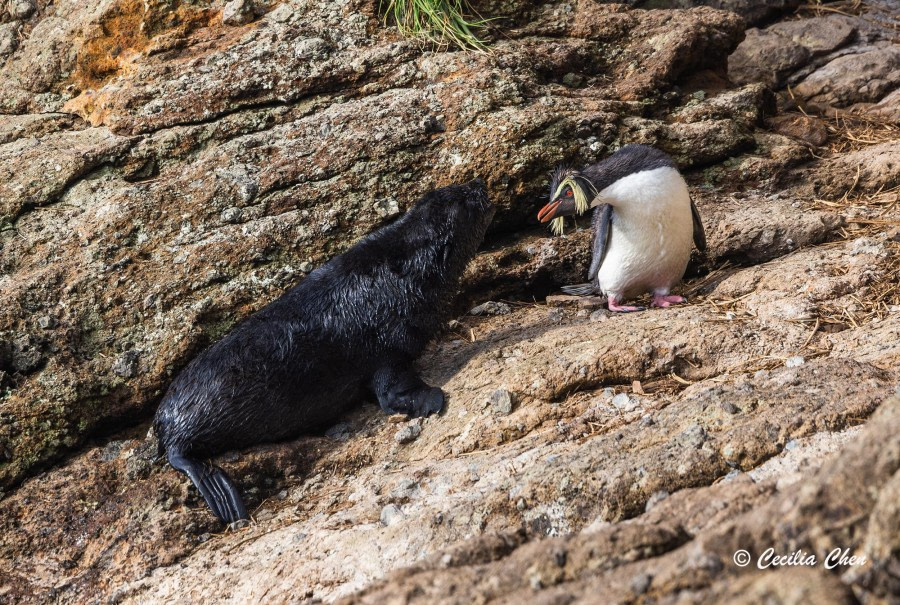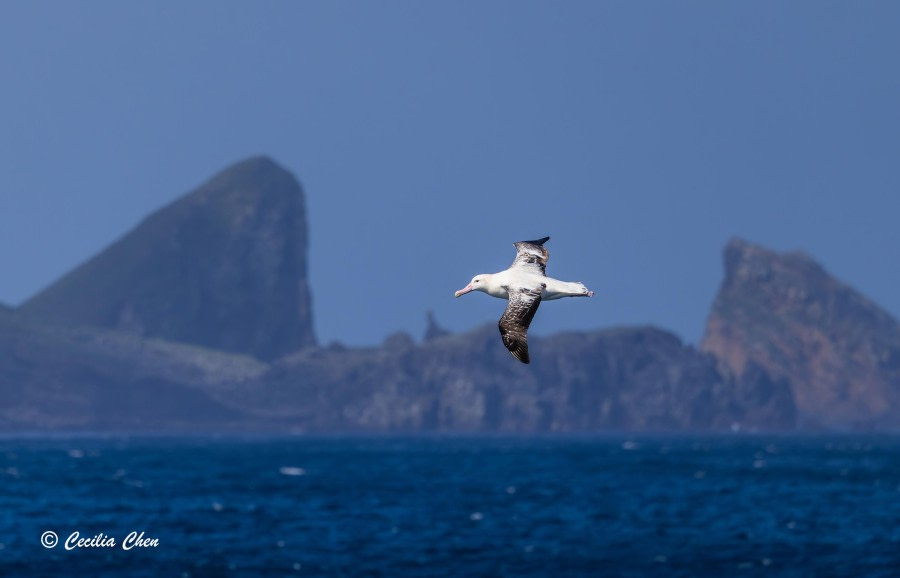Tristan da Cunha ist ein ganz besonderer Ort, ein aktiver Vulkan, auf dem Menschen leben, mitten im Südatlantik. Die Insel wird oft als die abgelegenste bewohnte Insel der Welt bezeichnet, ist aber auch berühmt für ihre spezifische Tristan-Kultur, ihre natürliche Schönheit und die große Anzahl von Seevögeln, die dort brüten.
Reisen nach Tristan da Cunha
Atlantik-Odyssee, einschließlich Antarktische Halbinsel bis Kap Verde
20 Mär - 2 Mai, 2028
•Reisecode: PLA32D28
Unsere Atlantik-Odyssee führt uns zu einigen der abgelegensten Inseln der Welt, wo wir den Zugwegen von Vögeln wie Küstenseeschwalben und Langschwanzskuas folgen, während Wale, Delfine und fliegende Fische über den Wellen der hohen See springen, sich...
Atlantik-Odyssee inkl. Antarktische Halbinsel bis Kap Verde
20 Mär - 4 Mai, 2026
•Reisecode: HDS31B26
Unsere Atlantik-Odyssee führt uns zu einigen der abgelegensten Inseln der Welt, wo wir den Zugwegen von Vögeln wie Küstenseeschwalben und Langschwanzskuas folgen, während Wale, Delfine und fliegende Fische über den Wellen der hohen See springen, sich...
Atlantik-Odyssee inkl. Antarktische Halbinsel bis Kap Verde
26 Mär - 7 Mai, 2027
•Reisecode: PLA32D27
Unsere Atlantik-Odyssee führt uns zu einigen der abgelegensten Inseln der Welt, wo wir den Zugwegen von Vögeln wie Küstenseeschwalben und Langschwanzskuas folgen, während Wale, Delfine und fliegende Fische über den Wellen der hohen See springen, sich...
Atlantik-Odyssee, einschließlich Antarktische Halbinsel bis St. Helena
20 Mär - 22 Apr, 2028
•Reisecode: PLA32C28
Unsere Atlantik-Odyssee führt uns zu einigen der abgelegensten Inseln der Welt, wo wir den Zugwegen von Vögeln wie Küstenseeschwalben und Langschwanzskuas folgen, während Wale, Delfine und fliegende Fische über den Wellen der hohen See springen, sich...
Atlantik-Odyssee inkl. Antarktische Halbinsel bis St. Helena
20 Mär - 24 Apr, 2026
•Reisecode: HDS31A26
Unsere Atlantik-Odyssee führt uns zu einigen der abgelegensten Inseln der Welt, wo wir den Zugwegen von Vögeln wie Küstenseeschwalben und Langschwanzskuas folgen, während Wale, Delfine und fliegende Fische über den Wellen der hohen See springen, sich...
Neuester Blog und Kundenbericht

Die acht Albatrosse der Antarktis und der Sub-Antarktis
Egal, ob Sie in die Antarktis, in die Subantarktis oder in eine Kombination aus beidem reisen, in diesem Eintrag finden Sie alle wichtigen Informationen über Albatrosse und darüber, wo diese Vögel am besten zu finden sind.
Aktuelles Highlight und Tierwelt

Sehen Sie die Highlights, die Sie erleben können:

Sehen Sie die Highlights, die Sie erleben können:
Karte von Tristan da Cunha
Tristan da Cunha: Foto
Bewertungen




FAQ
Wie ist die Temperatur in Tristan da Cunha?
Auf Tristan da Cunha herrschen das ganze Jahr über angenehme Temperaturen. Das feuchte Klima verursacht eine große Menge an Niederschlägen, und es ist sehr unwahrscheinlich, dass in Gebieten unterhalb von 500 Metern Frost auftritt. Die durchschnittliche Jahrestemperatur in Tristan da Cunha liegt bei milden 14,8 Grad Celsius (58,6 Grad Fahrenheit).
Im Januar beträgt die Temperaturspanne 15,4 bis 20,4 Grad Celsius (59,7 bis 68,7 Grad Fahrenheit). Im August können Sie mit einer Temperaturspanne von 9,7 bis 14,3 Grad Celsius rechnen (49,3 bis 57,6 Grad Fahrenheit).
Welche Wildtiere kann ich auf Tristan da Cunha sehen?
Tristan da Cunha wurde von BirdLife International als wichtiges Vogelschutzgebiet eingestuft. Es gibt zwei Landvogelarten, die das ganze Jahr über vor Ort bleiben, und weitere 13 Arten von Seevögeln brüten auf der Insel. Der Atlantiksturmvogel hat Tristan de Cunha und Gough Island als seine einzigen Brutplätze weltweit ausgewählt. Auf einer Reise nach Tristan da Cunha können Sie auch den Tristan-Wanderalbatros, Antarktische Seeschwalben und Nördliche Felsenpinguine sehen.
Meeressäugetiere sind auf den Inseln recht häufig anzutreffen, aber vor allem die subantarktische Pelzrobbe ist eine Art, nach der man Ausschau halten sollte, da sie nirgendwo sonst leicht zu sehen ist. Einer der am schwierigsten zu beobachtenden Vögel der Welt ist nur auf der Inaccessible Island zu finden: Die Unzugängliche Insel-Flugralle. Der Name sagt alles - es ist kein einfacher Ort zum Landen.
Leben Menschen auf Tristan da Cunha?
Nach der Volkszählung von 2015 hat Tristan da Cunha 268 ständige Einwohner. Alle Einwohner leben in Edinburgh of the Seven Seas, was bedeutet, dass nur ein kleiner Teil von Tristan da Cunha bewohnt ist. Kreuzfahrten nach Tristan da Cunha können die Einwohnerzahl vorübergehend erhöhen, aber ohne die Zustimmung aller ständigen Einwohner darf niemand neu auf die Insel ziehen.
Wer ist der Eigentümer von Tristan da Cunha?
Tristan da Cunha ist ein britisches Überseegebiet. Das Gebiet wurde erstmals 1506 entdeckt, aber erst 1810 dauerhaft besiedelt. Im Jahr 1816 wurde Tristan da Cunha vom Vereinigten Königreich annektiert und steht seither unter britischer Kontrolle. Das Gebiet hat zwar ein eigenes politisches System, aber die Königin hat die Exekutivgewalt.
Welche einzigartigen Merkmale hat Tristan da Cunha?
Abgesehen von der begrenzten Infrastruktur und der großen Anzahl an Seevögeln ist Tristan da Cunha vielleicht am besten für seine unbewohnten Wildtierreservate bekannt: Gough Island, Inaccessible Island und Nightingale Island sind die größten Inseln des Archipels.
Insgesamt gibt es sechs Vulkaninseln, die die Region Tristan da Cunha ausmachen. Die Nordwestküste ist der einzige Bereich des Festlandes, der nicht gebirgig ist. Ein gewaltiger und sehr schöner aktiver Vulkan macht den größten Teil der Landmasse der Hauptinsel Tristan da Cunha aus.
Eine Reise nach Tristan da Cunha hat auch viele kreative Köpfe inspiriert, und die Insel kam in Romanen von Edgar Allan Poe und Jules Verne vor.
Über Tristan da Cunha
Wetter auf Tristan da Cunha
Tristan da Cunha ist eine abgelegene Vulkaninsel im Südatlantik. Ihr Urlaub auf Tristan da Cunha bietet Ihnen ganzjährig milde Temperaturen von etwa 15 °C in den lokalen Wintermonaten (Juni bis November) und bis zu etwa 20 °C im Sommer. Bringen Sie Ihre Regenjacke mit, denn es gibt keine echte Trockenzeit auf den Inseln.

Fakten über Tristan da Cunha
- Tristan da Cunha gehört ebenso wie St. Helena und Ascension Island zu den britischen Überseegebieten.
- Tristan da Cunha ist die abgelegenste bewohnte Inselgruppe der Erde.
- Die Inseln wurden 1506 vom portugiesischen Seefahrer Tristão da Cunha entdeckt.
- Die Hauptstadt von Tristan da Cunha ist Edinburgh of the Seven Seas.
- Der britische Postdienst Royal Mail musste Tristan da Cunha 2005 eine eigene Postleitzahl zuweisen, da zu viele Briefe nach Edinburgh in Schottland geschickt wurden.
- Die ständige Bevölkerung auf der Hauptinsel Tristand da Cunha umfasst etwa 275 Menschen. Unter ihnen gibt es nur 8 Familiennamen.
- Weitere Inseln der Gruppe sind Gough, Nightingale und Inaccessible. Letztere ist die Heimat des flugunfähigen Rallenvogels, einer der am schwersten zu beobachtenden Vogelarten der Welt.
Reise nach Tristan da Cunha
Tristan da Cunha wird oft als die abgelegenste bewohnte Insel der Welt bezeichnet, ist aber auch für seine einzigartige Tristan-Kultur, seine natürliche Schönheit und die große Anzahl an Seevögeln bekannt, die dort brüten. Eine Kreuzfahrt nach Tristan da Cunha führt Sie in ein Paradies für Vogelbeobachter. Die vier Inseln, aus denen die Gruppe besteht, sind Brutstätten für Nördliche Felsenpinguine, Millionen von Seevögeln, darunter der einheimische Tristan-Wanderalbatros, der Atlantische Gelbschnabelalbatros, der Atlantische Sturmvogel, die Gough-Teichhuhn und die Flugunfähige Ralle der Unzugänglichen Insel.
Auf Ihrer Tristan da Cunha-Expedition können Sie die umliegenden Gewässer erkunden, in denen subantarktische Pelzrobben, See-Elefanten und eine Vielzahl von Walen beheimatet sind.




















